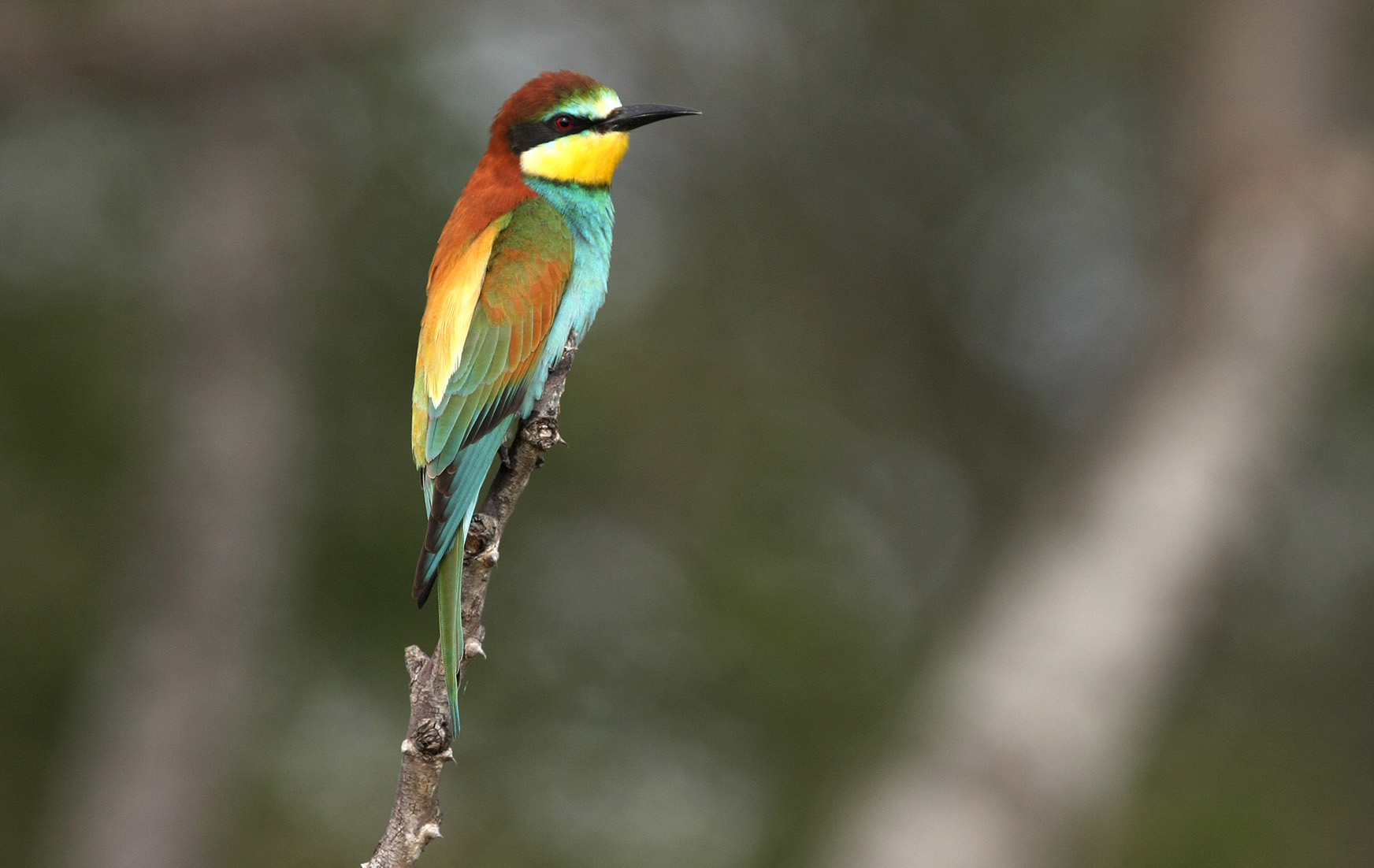Bird photography is an art that requires considerable patience. You might spend hours in remote places, holding the same position and waiting for your “quarry” to make an appearance. When it comes to rarer species, it could be years before you catch a glimpse.
For Burger Cillié, a wildlife photographer with more than 30 years’ experience under his belt, photographing birds is a matter of passion – and, when the perfect shot lines up, a quick trigger finger.
/file/dailymaverick/wp-content/uploads/2022/09/MC-bird-guide_1.jpg)
/file/dailymaverick/wp-content/uploads/2022/09/MC-bird-guide_2.jpg)
The recently published “VELD Birds of Southern Africa: The complete photographic guide”, which Burger co-authored, offers an opportunity to enjoy the fruits of bird photographers’ efforts. The compendium is a visual delight, showing the varied and vibrant birdlife southern Africa has to offer – from the Wandering Albatross to the Lark-like Bunting, from the African Emerald Cuckoo to the Zambezi Indigobird.
“There are just so many beautiful spaces and each with their own unique species that you’ll find only in that specific spot. I mean, the Zimbabwean highlands, the fantastic forests in Mozambique … there are specific species that you can only find there, and I think it makes it so special,” says Henda Boshoff, marketing and project manager for the guide.
/file/dailymaverick/wp-content/uploads/2022/09/MC-bird-guide_3.jpg)
Burger’s co-authors are Niel Cillié, bird photographer and author at Game Parks Publishing; Phil Penlington, birder and co-founder of the website BirdPics; Trevor Hardaker, chairman of the BirdLife South Africa National Rarities Committee; and Karin Wiesler, a keen birder with a degree in environmental management.
The book contains entries on 991 species that have been recorded in southern Africa, being the region south of the Kunene and Zambezi rivers, according to the introduction.
/file/dailymaverick/wp-content/uploads/2022/09/MC-bird-guide_4.jpg)
The visual experience
The quality of the photography helps to set it apart from other books on the subject. The authors took the time to find the best photos available, including images of “vagrants” – species which occur only rarely in the region, and whose native range lies elsewhere.
“Many of these have not appeared in print before, and they are probably the best set of photographic images of the region’s birds to be seen anywhere,” says the foreword by Warwick Tarboton, bird expert, photographer and author.
Almost all the images show the birds in profile and at rest, allowing a clear view of their distinct characteristics. Where there are differences within species between adults and juveniles, or males and females, pictures of the variations are presented side by side.
/file/dailymaverick/wp-content/uploads/2022/09/MC-bird-guide_5.jpg)
The opening pages include a helpful diagram of the external anatomy of a bird – for those of us who struggle to tell our primary coverts from our upperwing coverts – and a key for the distribution maps that accompany each entry. The maps are colour-coded to show whether species are vagrants, permanent residents, introduced species or summer visitors.
“The maps are really quite unique,” says Henda. “We actually went to a lot of trouble, especially Neil [Cillié], drawing up each and every map with the latest ... information.”
/file/dailymaverick/wp-content/uploads/2022/09/MC-bird-guide_6.jpg)
Visit Daily Maverick's home page for more news, analysis and investigations
Birding on the fly
The book is divided into 15 sections to make navigating the different bird types easier for experts and amateurs alike. The authors used observable characteristics rather than scientific jargon to separate species, says Burger.
Birds are divided into groups such as “Large birds with long legs”, “Seed eaters with a conical bill” and “Swimming waterbirds”.
/file/dailymaverick/wp-content/uploads/2022/09/MC-bird-guide_7.jpg)
/file/dailymaverick/wp-content/uploads/2022/09/MC-bird-guide_8.jpg)
“The idea behind that is to make it quite easy for your not-so-avid birder to … find the birds,” explains Henda.
The BirdScan app was developed in conjunction with the book. By scanning a photo of a bird in the book, users can find a corresponding entry about that species on the app, with additional information, further photographs and audio clips of the bird’s calls.
/file/dailymaverick/wp-content/uploads/2022/09/MC-bird-guide_9.jpg)
For all walks of life
The guide is intended to encourage people from all walks of life to start birding, says Henda, including youngsters and those with limited knowledge of birds.
“To us, it’s all about nature and getting everyone involved in it.”
For those who already have a thorough knowledge of the region’s birding scene, the book can still offer something new.
/file/dailymaverick/wp-content/uploads/2022/09/MC-bird-guide_10.jpg)
“With the avid birders that we had as authors, they would obviously spend a lot of time with these birds and pick up on interesting behaviour that has never been published before … characteristics, hunting behaviour, nesting behaviour,” says Henda.
“There’s enough information [to] encourage even the old birders who know everything to use it and experience [birding] in a new way.” DM/ML




 The book, 'VELD Birds of Southern Africa - The complete photographic guide', contains close to 1,000 species found in the southern African region, including the vibrant European Bee-eater. (Photo: Niel Cillié)
The book, 'VELD Birds of Southern Africa - The complete photographic guide', contains close to 1,000 species found in the southern African region, including the vibrant European Bee-eater. (Photo: Niel Cillié)